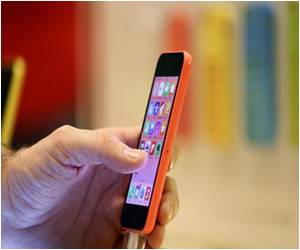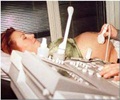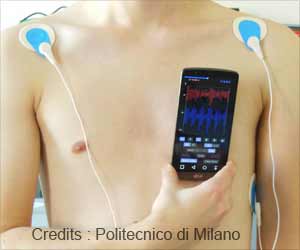When properly provisioned, the smartphone-user has the ability to monitor multiple types of body fluids, including: blood, urine, saliva, sweat or breath.

In case of medical applications, the sensor readings can be combined with the GPS signal of a smartphone and users can then be guided to the next drug store, hospital or the ambulance. The sensor uses the optical phenomenon of surface plasmon resonance (SPR), which occurs when light causes electrons on the surface of a thin film to jostle, to detect the composition of a liquid or the presence of particular biomolecules or trace gases.
Surface plasmon resonance occurs when a fixed beam of light strikes a metallic film; most of the light is reflected, but a small band is absorbed by the film’s surface electrons, causing them to resonate. When the metallic film is placed in contact with a fluid, the index of refraction of the liquid changes the absorbed band’s size and location in the light spectrum.
By adding recognition elements to the film that cause a shift in the index of refraction when bound to targeted biomolecules or trace gases, scientists can thus determine important information about a biological sample’s composition based on which light is reflected and which is absorbed. Researchers have the potential to develop small and robust lab-on-a-chip devices for smartphones. So, surface plasmon resonance sensors could become ubiquitous now, said Kort Bremer, inventor and co-author.
The study appears in Optics Express.
Source-ANI















